Welcome! Psychology student interested in classical studies? Look no further. Find here various entomological and historical backgrounds of a number of popular terms in the psychologcial realm. Accompanied by images and gifs, this is the ultimate way to learn about the Greek and Latin roots of the discipline of psychology.
Don't wanna be here? Send us removal request.
Photo



What do the entomologies of all these terms tell you about the classical background of this field?
Although today, the world of psychology is far more developed, progressive and understood, the classical backgrounds of the discipline were still pretty comprehensive. However, not having the extensive medical knowledge and advancements that we have today, the classical terms focus and rely a lot more on the cognitive and social aspects of the psychological field. It focused more on emotions and cognitive responses versus the biological side. Some examples could include, the system of the four humours and their responsibility in the body or the visible physical changes of the body of a person afflicted with a serious psychological disorder, like schizophrenia. These concepts, which could have been so easily explained had they had today’s medical knowledge, were simply laughed off, seen as voodoo, witchcraft, being crazy or just plain nonsense. This made for a discipline that was a little harder for people to believe in, and thus take seriously, giving it a much longer route to success and credibility.
0 notes
Photo



Term of the Day: Anxiety
Originating from Latin “anxietatem” meaning “anguish” or “solitude”, this term is now used to describe a class of mental disorder or general emotional response. Also, known to originate from Latin “anxius” meaning “uneasy” or “troubled in mind”, the term is now classified in the DSM-5 as a psychological disorder, with it being more of an umbrella term with many different sub divisions. For example, phobias, panic disorders and trauma-related anxieties, like PTSD, are all classified under the Anxiety Disorders umbrella. These disorders are generally defined as an abnormal or overwhelming sense of apprehension and fear, often marked by physical signs, for example, increased heartbeat, sweating, tremors and shortness in breath. The first known use of the term in the English language is known to be roughly around the 15thcentury. However, the term as we known it of general anxiety in the psychological sense was only attested 1980’s. Before this recognition by the psychological community, people suffering from anxiety disorders were simply put aside, not taken seriously, and given a general diagnosis of stress or nerves.
0 notes
Photo



Term of the Day : Hippocampus
Originating from late Latin “hippocampus”, this term is also the name of a brain structure. Also rooted in Greek as “hippokampos” – a compound of roots “hippos” meaning “horse” and “kampos” meaning “a sea monster” – the term has a very interesting back story. In Greek mythology, the term is known as a kind of sea-monster – part fish part dolphin – most commonly known as the creature pulling King Neptune’s chariot in art and mythological depictions. In medical and psychological use, the Hippocampus is the brain structure primarily responsible for the formation, processing, storage and retrieval of memories. The structure also happens to be part of the Limbic System. From around the 1570’s, the term was used as a name for a type of fish, most likely a seahorse, until it was changed to name the brain structure around the 1700’s. It’s said to be named this because the brain structure is known to resemble the seahorse in shape and structure. The term is a learned borrowing travelling from Latin, through Greek and finishing in the English language.
0 notes
Photo



Term of the Day: Amygdala
Originating from Latin “amygdalum” literally meaning “almond”, this term is today known as a part of the human brain. The term is also rooted in Greek with “amygdale” also meaning “almond”. The roots translate to this because the brain structure is actually shaped like an almond and is the easiest way to recognize it. The first known medical use was recorded somewhere in the 1840’s. The amygdala, part of the Limbic system structure of the brain, is primarily responsible for the regulation and processing of emotions. Mostly, it’s especially responsible for the processing of fear and aggression. Damage to this brain structure could result in exactly the opposite; poor regulation of fear and violent and unpredictable outburst of anger and irritability.
0 notes
Photo

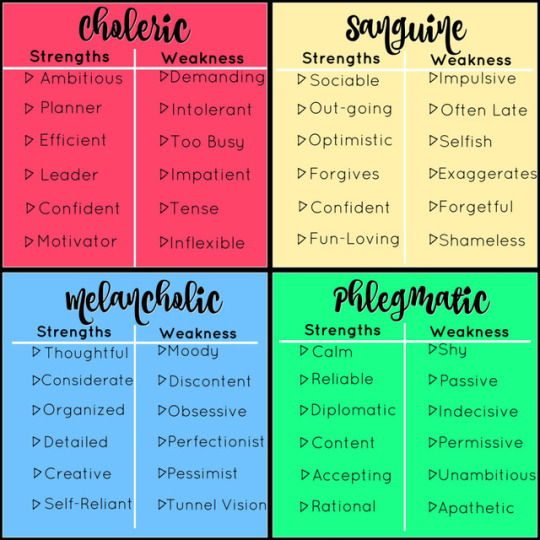

Term of the Day: Temperament
Originating from Latin “temperatum” meaning “a proper mixture” or “a mixing in due proportion”, today, this term essentially describes a person’s nature or an aspect of an individual’s personality. In classical studies and old medicine, it was used to describe a combination of qualities or humours – being sanguine, choleric, phlegmatic and melancholic – that made up a person’s characteristic disposition. Now, in the world of psychology, the term is used to describe the type of personality someone has and thus how they behave themselves, respond to new situations, and how easily they can adapt. Your temperament is coined when you are a baby and is known to stay rather consistently throughout your life. The three types of temperament for a child to possess, are easy temperament, slow-to-warm-up temperament and difficult temperament. This is determined by the child’s mood, how easily they adapt to new and strange situations, their sleeping and eating patterns and how susceptible to irritability. This general psychological sense was attested roughly around the 1820’s.
0 notes
Photo

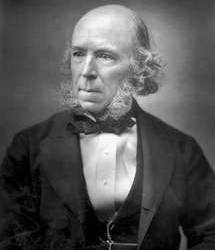

Term of the Day: Heredity
Originating from Latin “hereditatem” meaning “heirship” or “the condition of being an heir”, is today, pretty much used to define the same concept. The term has many roots including passing through Old French as “eredite” meaning “inheritance” or “legacy”, passing through Greek as “khera” meaning “widow” and even gaining a Proto-Indo European root “ghe” meaning “to be empty” or “left behind”. Today, the legal sense of “the inheritable quality of character” was first known to be recorded somewhere around 1784. The more biological and psychological meaning of “qualities that are transmitted from parents to offspring” was introduced by the Victorian Era English philosopher, biologist and anthropologist Herbert Spencer in 1863. One of the most common ways to use this in a psychological context is when determining the health of a patient. Many behavioral concepts, for example a person’s temperament, and also many mental disorders, for example, schizophrenia, have been known to have very strong genetic and hereditary components.
0 notes
Photo



Term of the Day: Stimulus
Originating from Latin “stimulus” meaning “a goad” or “pointed stick”, this medical and psychological term is not used to describe anything that excites or arouses the mind or spirit. This general sense came into the English language, a direct learned borrowing from Latin, sometime in the 18thcentury, more specifically around the 1790’s. This term also has a Proto-Indo European root, prefix “sti” meaning “to prick or pierce”. Originally, this term was only used as a medical term, one that was used to describe anything that goads a lazy organ, more specifically geared towards males. Now, the psychological sense of this same arousal, but more specifically applied to responses coming from the mind, was only attested in 1894.
0 notes
Photo



Term of the Day : Serotonin
This term, coined from Latin “sero” – a combination of Latin “serum” meaning “a watery fluid”, of word “tonic” and finally of word forming element “in”, that in chemistry, indicates the presence of a neural substance, antibiotic, vitamin or hormone – is the name of one of the most well-known chemical neural transmitters found in a person’s brain. This term, with its first known use being recorded in the late 1940’s, is the neuro-transmitting chemical associated with the neuro-chemical reacts that make a person experience and feel joy. In the psychological sense, the chemical is associated with the diagnosis and treatment of most psychological disorders classified in the DSM-5. The most common example would be in the diagnosis and treatment of major depressive disorder. One of the most prevalent symptoms of this disorder is the lack of production of serotonin in the brain and treatment for this is the prescription of anti-depressant medications to increase the production of this chemical to a more normal and functional level. Enjoy a demonstration of the respective levels of serotonin, as well as other chemical neurotransmitters like dopamine and oxytocin, that bring on specific disorders and emotions in a person above!
0 notes
Photo




Term of the Day : Stress
Originating from Latin “strictus” meaning “tight” or “compressed”, this term now explains the emotional and physical person will experience when faced with hardship, adversity or an oppressive situation. The term, passing pretty directly into the English language, made one stop with Old French “estrece” meaning “narrowness” or “oppression”. Before the definition we know today, from around the mid 15thcentury, the term literally meant “to put physical strain on a material object”. The more psychological sense was only attested in 1955. This bodily reaction to a threatening situation can present itself as short or long term. If stress is noticed to be extremely long term or chronic and there are noticeable physical and mental changes, the consultation of psychological help is strongly recommended
0 notes
Photo



Term of the Day : Melancholy
Originating from late Latin “melancholia” meaning “sadness”, this term now goes to describe a state of mind, or mood that someone can find themselves afflicted by. The term, known to pass through Old French “melancholie” meaning “anger” or “annoyance”, is also known to pass through Greek root “melankholia” literally meaning “excess of black bile”. This came from a combination of roots “melas” meaning “black” and “khole” meaning “bile”. In classical studies, his black bile was known to be one of the four “humours” of the body; fluids that controlled a person’s mood or state of mind and their physical well-being. Any improper mixture or excess of black bile, or any of the other three humours – being phlegm, blood, and yellow bile – was believed to result in physical or behavioural issues. By the mid 14thcentury, the term had found its way into the English language, through Middle English, to explain “gloom” or “sorrow”. Along the way, as the old physiological belief of humours faded out, the term still remained meaning “a gloomy state of mind” and is the definition in terms of psychological literacy today.
0 notes
Photo




Term of the Day : Memory
Originating directly from Latin “memoria” meaning “remembrance” or “the faculty of remembering”, this term is now used to describe the process in which an organism’s brain reproduces, recalls and stores information that has been learnt and retained. Known to be used at its earliest use sometime somewhere in the late 13thcentury, the term derived from an abstract Latin noun “memor” meaning “mindfulness” and is also known to have a Proto-Indo European root “smer” meaning “to remember”. Although its origins are mostly based in Latin root, the term also has a distinct Sanskrit root, “smarati” meaning “to remember”. Today, in the psychological world a patient’s memories are a very important tool to use in therapeutic help for many psychological disorders. Also, the general exploration of how a human brain remembers things is a very important exploratory project as once we figure out how it works, we can create tools and mechanisms to aid people in developing a better memory. Enjoy Dory from Disney’s “Finding Nemo”, going through her own memory problems!
0 notes
Photo



Term of the Day: Schizophrenia
Originating from modern Latin, literally meaning “split mind”, this term is now used to describe a debilitating mental disorder, in which approximately 1.2% percent of the world population suffers. This word found its way into the English language, directly from Latin, and was coined in roughly 1910 by German psychiatrist Eugen Bleuler from German word “schizophrenie”. The term is also rooted in Greek vocabulary from word “skhizein” meaning “to split”. As far back as we can go, it derives from a combination of the Proto-Indo European roots “skei” meaning “to cut” or “to split” and “phren” a genitive form of the root “phrenos” meaning “heart” or “mind”. Today, in a psychological sense, it is classified under the DSM-5 as a psychotic disorder characterized by symptoms like delusions, hallucinations, disorganized speech and disorganized or catatonic behaviour.
4 notes
·
View notes
Photo
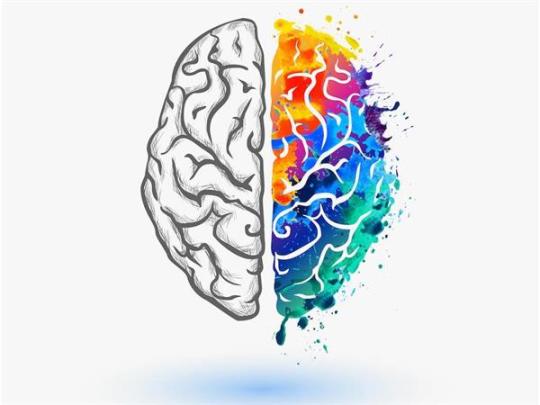


Term of the Day: Psychology
Originating from modern Latin “psychologia” literally meaning “study of the soul” is a term that was known to be coined by the mid-16th century. This term, a compound of multiple roots, was derived from the Latinized form of Greek “psykhe” meaning, “spirit” or “soul” and the suffix “logia” literally meaning “the study of”. The modern sense, first attested around the early 1890’s, means the science of the mind and of any mental or behavioral characteristics of an individual that influence these studies. One early known use for this term, is one that appears in Nicholas Culpeper’s translation of Simeon Partliz’s “A New Method of Physick”. Today, this term essentially describes a discipline of the social and biological sciences in which billions of people study.
0 notes
Photo







Term of the Day: Phobia
Originating from Greek compounds in the term “phobos” literally meaning “an outward showing of fear”, this term, today, is defined as an exaggerated, usually irrational fear of a particular object or situation. The first known use of this term is roughly around the 18thcentury and is a learned borrowing that passed from Greek to Latin to finish in the English language. Originally, this term is also related to Greek “phobein” meaning “flight” or “to flea” and the Proto-Indo European root “bhegw” meaning “to run”. The psychological sense was attested around 1895, as being learned emotional responses that are, in the Diagnostic and Statistical Manual of Mental Disorders (DSM-5), classified as a type of anxiety disorder. Enjoy some interesting phobias above!
0 notes
Photo



Term of the Day : Persona
Originating from Latin “persona” literally meaning “person” this is a term used essentially to describe a social mask. This term is a learned borrowing that came into English roughly in the 18thcentury. The psychological sense of the term was first coined by Swiss psychiatrist Carl Jung. Jung described this term as the personality that one projects to others around them that differs from their regular personality, or the “authentic self”. This act enables a person to relate better and adapt to surrounding environments by reflecting the role of the individual that they are in life at that moment. An example of this would be, the way you project your personality around your friends and family, versus the way you project it around professionals like your teachers or employer.
0 notes
Photo
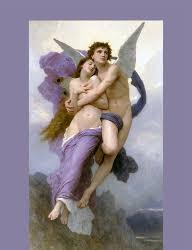

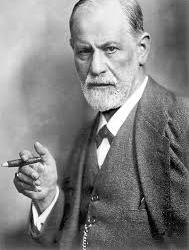
Term of the Day: Psyche
Originating from Latin “psyche” or Greek “psykhe”, this term is one that means literally “spirit” or “mind” or in Greek, “departed soul”, “spirit” or “ghost”. In the Greek roots, it is the name of a young woman from a Greek mythology or folklore story who fell in love with, and after a trial of impossible tasks, was able to marry the Greek god Cupid. This term is in fact a learned borrowing and it’s first known use in the English language was recorded to be somewhere in the 16thcentury. In today’s world, the psychological sense of the term, essentially meaning “the inner workings of a person’s mind” was attested around 1910. Today, this concept is most well-known by Sigmund Freud’s theory of self or psyche; a “self” made up of three different parts, the Id, the Ego and the Superego, each being responsible for a certain aspect of a person’s inner thought processes and decision making.
1 note
·
View note